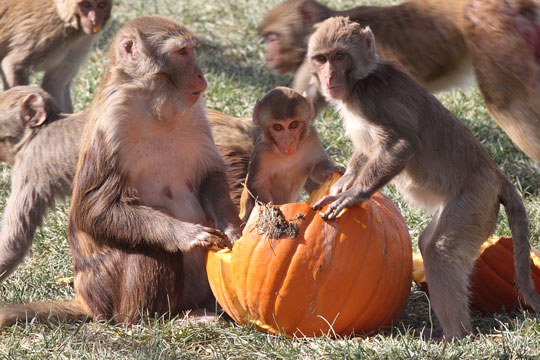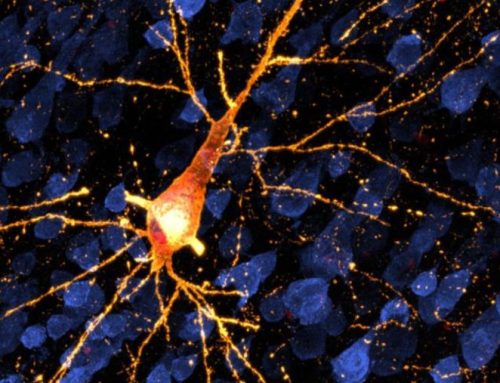A fascinating collaboration was recently conducted between disparate interests: the CNPRC, UC Davis’ Department of Statistics and Department of Economics, the International Institute for Human-Animal Networks, and the Department of Population Health & Reproduction at the School of Veterinary Medicine.
In a study comparing the behaviors of outdoor-housed rhesus macaque monkeys with banking industry activities, the researchers propose that tools developed to predict instability in monkeys’ social systems can provide an early warning system of an impending crisis in human societies, and that such crises are caused by breakdowns in internal networks rather than by disabling external forces. Catastrophic collapses could be avoided by monitoring changes in these key internal networks, they suggest.
“Admittedly, comparing monkeys to a financial system is unconventional, however, we believe the comparison is compelling,” said Fushing Hsieh, a professor of statistics and the study’s lead author.
“We argue that it’s possible to detect when a crisis is likely to set in — whether in a primate social group or an industry like banking — by modeling the evolution of the breakdowns across the system’s networks,” said co-author Òscar Jordà, a UC Davis economics professor and research advisor to the Federal Reserve Bank.
Dr. Brenda McCowan, Core Scientist in the CNPRC Brain, Mind, and Behavior Unit, and Program Head of Behavior Management, and Dr. Brianne Beisner, CNPRC and School of Veterinary Medicine Project Scientist, collaborated on the publication that addressed this question in the International Journal of Forecasting (e-pub Jan. 2, 2014, “Computing systemic risk using multiple behavioral and keystone networks: The emergence of a crisis in primate societies and banks”, H. Fushing, O. Jordà, B. Beisner, and B. McCowan).
Studying the rhesus macaque societies at the CNPRC, they applied these tools to primate social systems, which were observed under both stable and unstable states or phases. Interestingly, these primate social systems have many points of commonality with the architecture of a banking system.
Drs. McCowan, Beisner, and colleagues have shown that the individuals or “nodes” in monkey social systems relate to each other through multiple and keystone networks (aggression, affiliation, alliance networks, and the keystone network: status signaling) not just one network. Similar to a banking system, each network in the system has its own topology, and the interactions among the system’s networks change over time. For example, the networks in a community of captive monkeys are based on behaviors such as mutual grooming, fighting, assisting in fights and displaying status signals such as teeth-baring. In the banking industry, the primary activities revolve around interbank lending, loan syndication, bond-issuing services and insurance.
In such systems, the lead into a crisis appears to be characterized by both the collapse of the keystone network and a decoupling of the other networks from the keystone network. Early detection of these patterns can be used to assess the tipping point, allowing us to predict and prevent such collapses from occurring.
“There may not much teeth-baring in the banking industry, however we did determine that interbank lending likely would be the network in that system that is of comparable importance to subordination signaling in monkey colony,” said McCowan.
She noted that these keystone networks are critically important because they significantly influence the stability of other relationships or networks within each respective system.
Admittedly, comparing rhesus macaques to a financial system is unconventional. However, the authors suggest that these research methods provide one approach that could be scaled up in order to model the vulnerabilities of the financial system as well as other human social systems. Such patterns of vulnerability are also likely to have significant implications for both individual and population health in both monkeys and humans, which the research group among other collaborators are currently investigating with R01 and R24 NIH support.
Funding for the study was provided by the National Science Foundation and the National Institutes of Health.






